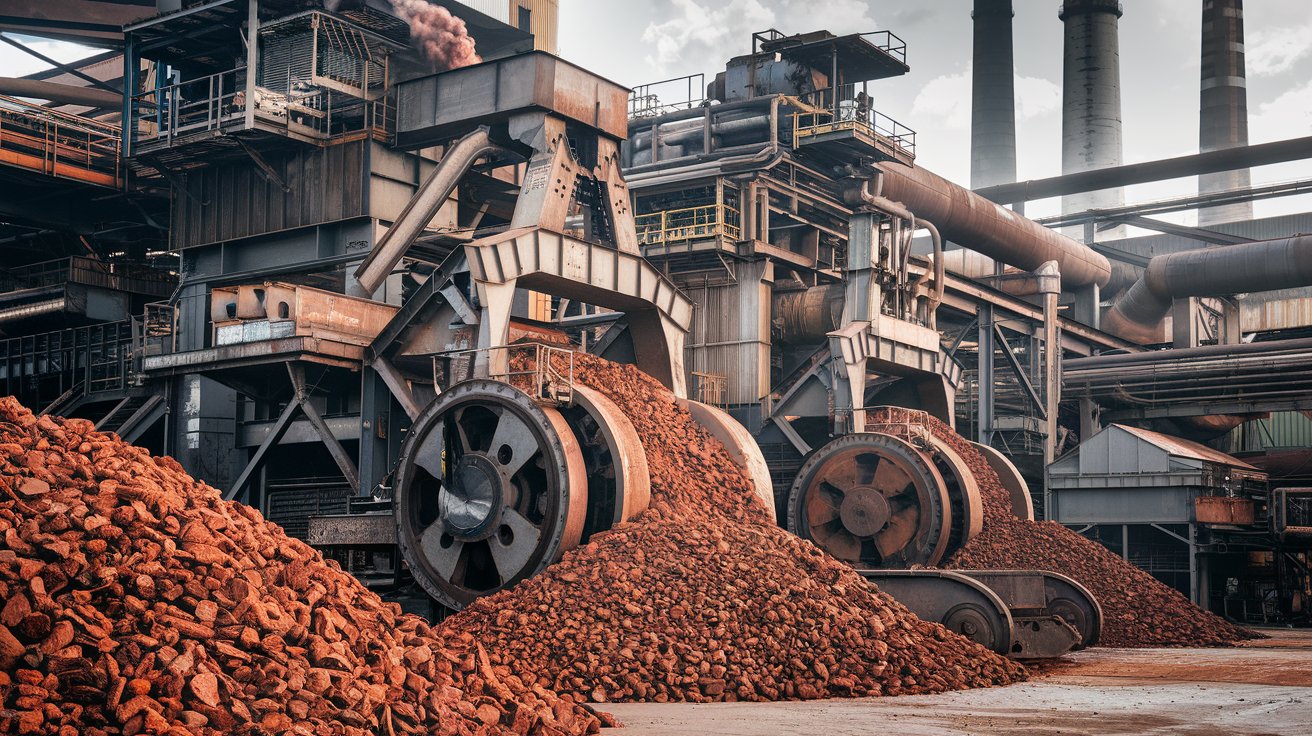A dip in iron ore prices might seem like a cause for alarm in the mining sector, but for many, it’s just a temporary blip on the radar. As miners pivot their focus to the red-hot demand for copper, iron ore’s stumble appears less a crisis and more a minor hiccup. With copper positioned as a critical metal in the global energy transition, are iron ore’s woes a distraction or an opportunity for nimble miners to capitalize on shifting market dynamics?
This year, iron ore has been one of the worst-performing commodities, with the benchmark price plunging as much as 36% in 2024. On Tuesday, iron ore prices hit a low of $90.25 per metric ton, the weakest level since November 2022, according to data from S&P Global Commodity Insights. The price saw a slight uptick on Wednesday, but the overall trend remains bearish.
The primary driver of this decline has been the ongoing crisis in China’s property market. China accounts for approximately 70% of global iron ore imports, and the slowdown in its real estate sector has led to a significant reduction in steel demand. The housing sector, a key consumer of steel, is in turmoil, with new construction starts down sharply, and many steel mills facing financial losses.
Big Miners Brace for Impact
Major mining companies like BHP Group (NYSE: BHP) and Rio Tinto (NYSE: RIO) are feeling the squeeze. For BHP, iron ore contributed 64% of its earnings in the fiscal year ending in June, while for Rio Tinto, iron ore remains the source of nearly 70% of its revenue. Even though these giants operate at much lower costs than smaller competitors, allowing them to remain profitable despite falling prices, the margins on their iron ore operations could shrink significantly if the current trend continues.
While these companies remain profitable for now, they are increasingly diverting resources towards other commodities. Both BHP and Rio Tinto have been ramping up their investments in copper and lithium projects, eyeing an expected surge in demand for these materials driven by the global push toward renewable energy, electric vehicles, and power grid expansion. This shift in focus requires considerable capital, making the iron ore downturn particularly ill-timed.
Demand Challenges and Market Sentiment
Iron ore’s fortunes are closely tied to China’s economic health. The latest data shows a 5% year-on-year decline in China’s iron ore imports in August, marking the first annual contraction since November 2022. Stockpiles have also risen by roughly 30% year-to-date at major Chinese ports, reflecting a lackluster demand environment. Despite recent government efforts to stabilize the property market, analysts remain divided on where prices might head next.
Some experts, like ING’s Ewa Manthey, argue that prices will likely remain under pressure, pointing to the losses at Chinese steel mills and the buildup in port inventories. Manthey forecasts an average price of $95 per ton in the final quarter of the year. Conversely, others, including Commonwealth Bank’s Vivek Dhar, suggest prices might stabilize between $100 and $110 per ton as iron ore supply growth slows and mills restock raw materials after the summer.
Even with these diverging views, the consensus appears to be that any substantial price recovery is unlikely in the near term. BHP’s own economists recently indicated that the market is experiencing a deepening surplus, with supply expected to outstrip demand into 2025. They predict that mining costs could place a floor under prices in the range of $80 to $100 per ton, as high-cost producers could halt operations if prices fall below this threshold.
What Should Investors Watch?
For investors, the key question is whether the major mining companies can weather this storm without significant damage to their bottom lines. BHP’s Chief Executive, Mike Henry, has pointed to the company’s robust margins—68% for its iron ore business last year—as evidence of its ability to manage through price volatility. However, the market remains cautious, given the outsized contribution of iron ore to these companies’ earnings.
Shares in BHP and Rio Tinto have both dropped around 20% year-to-date, while Brazil’s Vale (NYSE: VALE), another top iron ore producer, has seen its stock decline by roughly 35%. With the iron ore market facing a glut and demand outlook uncertain, many investors are concerned that the downside risks may outweigh the potential rewards in the near term.
Tom Price, an analyst at Panmure Liberum, encapsulated the bearish sentiment by stating, “Right now, there’s real pain in the iron ore world.” He remains doubtful about any near-term upside for iron ore prices, which have already declined 30-40% year-to-date.
Key Takeaways for Investors
- Diversification Strategy: Investors may want to look beyond iron ore and focus on mining companies that are strategically diversifying into other critical materials like copper and lithium.
- China’s Property Market: The health of China’s real estate sector remains a pivotal factor in the iron ore market. Investors should keep a close eye on Chinese housing data and government policy shifts.
- Cost Floors and Supply Adjustments: Monitoring cost structures and supply adjustments among high-cost producers could provide insights into potential price floors for iron ore.
Conclusion
As iron ore prices slump to multi-year lows, the world’s largest mining companies are facing a challenging environment. While giants like BHP and Rio Tinto are leveraging their low-cost operations to remain profitable, the future looks uncertain. Investors should closely monitor the dynamics in China’s property market, potential supply adjustments, and the strategic pivot towards energy transition materials like copper and lithium.
